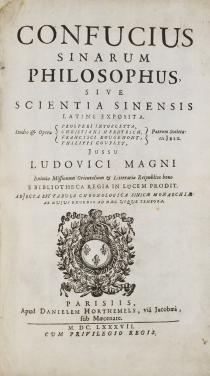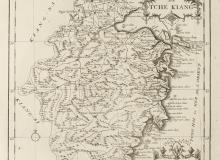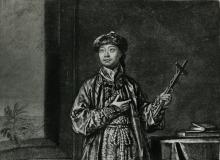Translation of Confucian classics into European languages
The Jesuits in China quickly realized that the Confucian canon of philosophical texts were the bedrock of Chinese intellectual culture. For them to understand the land to which they had traveled and the culture within which they wished to be accepted, they knew that they too had to read and understand the Confucian classics deeply. As a result they not only started studying Chinese language and culture through the use of these texts (in order to understand the books in their linguistic context) but they also started translating these texts so that they could inform others of these works and examine them from a comparative viewpoint.
Both of the early China mission Jesuit pioneers, Matteo Ricci and Michele Ruggieri, started translating these texts into Latin when they lived in Zhaoqing, in southern China. This was necessary in order to be accepted into Chinese culture, especially by the scholars with whom they felt the most natural affinity. Once they knew enough language to analyze the Confucian texts from an intellectual and not simply just a linguistic viewpoint, the Jesuits began to consider the similarities and differences between Confucian interpretations of human nature and Christian teachings about similar issues. Ricci began to develop a creative way of integrating Christian theology into the Confucian worldview, and he argued that not only did such a synthesis enable the Jesuits to enter deeply into intellectual conversation with Chinese culture but it also in fact supplied missing pieces to Confucianism.
Such a view was obviously highly problematic, not only for non-Jesuit Christian missionaries who saw such work as a dangerous act of syncretism, but also for Confucian scholars who saw this attempt at synthesis as an act of heterodox cultural appropriation. The Jesuit focus on Confucian thought also had its influence in Europe in that the translation of the major Confucian texts into Latin – and published for the first time in the 1687 Confucius Sinarum Philosophus – proceeded to engage the major European philosophers of the day, including Voltaire and Leibniz. This book was the product of a century worth of diligent translation by Jesuit missionaries, who had to solve even such simple things as how to translate the philosopher’s Chinese name Kong Fuzi, into Latin. (Their solution, the transliteration ‘Confucius’, is still in use today.)




